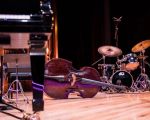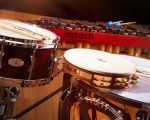How to Set Up Your Music Studio for Recording Vocals
Setting up a music studio for recording vocals is one of the most exciting yet challenging tasks for any aspiring artist or producer. Whether you're an experienced musician or just starting out, having the right environment and equipment is essential for achieving high-quality vocal recordings. In this guide, I’ll share tips and insights from my experience of creating a home studio that’s perfect for vocals, helping you avoid common mistakes and get the most out of your recordings.
1. Choose the Right Room for Your Music Studio
The first step in setting up your music studio is choosing the right room. Not all rooms are created equal when it comes to acoustics. Ideally, you want a space that’s quiet, isolated from external noise, and has good sound absorption properties. For the best results, try to pick a room with minimal reflective surfaces, as they can create unwanted reverb in your recordings. Carpeted floors, curtains, and soft furnishings help in absorbing sound. If you’re in an apartment or shared house, consider using foam panels or bass traps to reduce sound bouncing off walls.
2. Invest in Good Recording Equipment
Once you have the right room, it’s time to focus on your equipment. At the heart of any vocal recording setup is the microphone. While there are many options available, a good-quality condenser microphone is essential for capturing the nuances of your voice. Popular choices for studio-grade microphones include the Audio-Technica AT2020 or the Shure SM7B, both of which are known for their clear, detailed sound. Don’t forget to pair your mic with an audio interface for better sound quality and performance. I recommend the Focusrite Scarlett 2i2 as a reliable option for home studios.
3. Set Up Your Microphone Properly
Proper microphone placement is crucial for getting the best sound. You should always use a pop filter or windscreen to minimize plosives—those harsh ‘p’ and ‘b’ sounds that can distort the recording. A good rule of thumb is to position the microphone about 6-8 inches away from your mouth, depending on the type of vocal performance. Avoid placing the mic directly in front of your face to prevent unwanted noise, such as breath sounds, from being picked up.
4. Soundproofing and Acoustic Treatment
Soundproofing your recording space is key to creating a professional-quality vocal recording. You don’t need a completely soundproofed room, but reducing external noise is essential. Use heavy curtains, weather stripping around doors, and acoustic foam panels on walls to control sound reflections and unwanted noise. If you’re recording in a smaller space, try to record when outside noises are minimal, like early mornings or late evenings. Acoustic treatment, like bass traps in the corners, will help you control low-frequency sounds and ensure clarity in your recordings.
5. Proper Monitoring and Headphones
Monitoring your vocals while recording is vital to ensure accuracy and proper performance. Invest in good studio headphones, such as the Audio-Technica ATH-M50X or the Sennheiser HD 280 Pro, which offer excellent sound isolation and clear, precise audio. Additionally, using high-quality studio monitors will help you hear your vocals with more clarity during playback. A pair of KRK Rokit or Yamaha HS series speakers are solid choices that will give you true-to-life sound when mixing and recording.
6. Software and Recording Setup
Finally, you’ll need some recording software to capture and edit your vocals. Popular digital audio workstations (DAWs) such as Ableton Live, Logic Pro X, or Pro Tools are perfect for vocals, with plenty of plugins to enhance your sound. For those just starting out, free DAWs like Audacity or Cakewalk are also great options. Make sure your DAW is compatible with your audio interface, and be sure to configure your input settings for optimal recording quality.
7. Maintain a Comfortable Environment
Vocal performance can be physically demanding, so it’s important to make sure you’re comfortable during your recording sessions. Keep your space cool and well-lit, and make sure there’s adequate ventilation. A comfortable chair, standing desk, or even a vocal booth setup will improve your performance. Also, don’t forget to keep water and throat lozenges nearby to keep your voice in top shape for long sessions.
Setting up a music studio for recording vocals can be an overwhelming task, but with the right equipment and setup, you can create professional-quality recordings from the comfort of your own home. By carefully considering your room choice, equipment, microphone setup, and soundproofing, you'll be well on your way to recording vocals like a pro. Best of luck in your recording journey!








